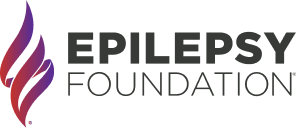Genetic Epilepsy with Febrile Seizures Plus

Learn More:
Donate to Support Our MissionWhat Is The Syndrome Of GEFS+?
This syndrome was first described by Drs Berkovic and Scheffer in 1997 and called Generalized Epilepsy with Febrile Seizures Plus. In 2020, the G for “generalized” was replaced with “genetic” because patients with this syndrome may not have “generalized” seizures but could also have focal seizures. A GEFS+ family is defined as a family with at least 2 or more individuals with GEFS+ seizures with at least one family member with febrile seizures or febrile seizures plus (FS+).
Typically, seizures start between 3 months and 6 years of age, are triggered by fever, and are generalized and short lasting for most patients. However instead of the common febrile seizure syndrome where patients are likely to outgrow the fever-induced seizures by 6 years old, patients with FS+ will continue to have febrile or non-febrile types of seizures after age 6 years.
There may be members in a family of GEFS+ family where some members have more severe forms of epilepsy called Dravet syndrome or myoclonic atonic epilepsy.
What Seizure Types Are Seen?
The most common seizure types are typical febrile seizures, seen in approximately half of cases, or febrile seizures plus, seen in approximately 1 in 4 cases. Although seizures are typically generalized tonic clonic, patients can also have absence, myoclonic, atonic, myoclonic-atonic, or focal seizures. Dravet syndrome and myoclonic atonic epilepsy represents the more severe end of the spectrum within the GEFS+ phenotype.
Boys and girls are equally affected.
Is GEFS+ Inherited?
GEFS+ is an inherited, genetic disorder. Multiple genes have been known to cause this condition. Inheritance is generally autosomal dominant (passed on from one generation to the following) with incomplete penetrance (may not see clinical effect in all affected individuals), but this may not be the only situation. Approximately half of children born to a parent with GEFS+ are likely to have the condition.
Variants (changes in genes) have been found in several genes including sodium channel subunits (SCN1A, SCN2A, SCN1B, SCN9A) and GABAA–receptor gamma 2 subunit (GABRG2), STXBP1, and FGF13. It is likely that other genes, as well as environmental factors, may modify the risk and severity of seizures in this condition.
Diagnosis
GEFS+ is usually identified when the doctor takes a careful family history from someone who has febrile seizures outside the normal age range. This may involve talking to immediate family members, particularly to grandparents, who may remember their children or nieces and nephews having febrile convulsions or other types of seizures as a child.
Investigations
An EEG (electroencephalogram) is often done and usually shows a normal background with generalized discharges.
An MRI (magnetic resonance imaging) is often not required, but can be done if seizures are focal, or if seizures appear to be more severe, and not responding to medication.
Genetic Testing
Genetic testing is not required for all families with this condition. You should discuss the need for genetic testing with your health care provider. If done, genetic testing could be performed on blood or a cheek swab. Your doctor may send either an epilepsy panel or whole exome sequencing.
Prognosis
Seizures typically stop by later childhood or adolescence and medications can usually be tapered off. Development is usually normal. However, patients with Dravet syndrome or myoclonic atonic epilepsy of Doose may not have a normal development and might have intellectual disability, learning or behavioral disorders.
Management Options
Once a suspicion for GEFS+ is raised, you should seek care from a qualified epilepsy specialist.
Not every person will need to be placed on daily medication. Your doctor will discuss treatment options, including rescue medications for repeated or prolonged febrile seizures. They will also discuss the pros and cons of daily preventative medication.
Different rescue medicines for treating febrile seizures include rectal diazepam and intranasal midazolam.
Repetitive febrile seizures or FS+ may need preventive treatment. Valproate, lamotrigine, levetiracetam, or topiramate may be used for non-febrile generalized seizures, if these are frequent. Rare cases that evolve to Dravet syndrome or myoclonic atonic epilepsy of Doose should be managed based on those syndromes.
Rarely do patients need dietary therapy or surgery for seizures that are difficult to treat.
Learn More:
Find Your Local Epilepsy FoundationResources
Epilepsy Centers
Epilepsy centers provide you with a team of specialists to help you diagnose your epilepsy and explore treatment options.
Epilepsy Medication
Find in-depth information on anti-seizure medications so you know what to ask your doctor.
Epilepsy and Seizures 24/7 Helpline
Call our Epilepsy and Seizures 24/7 Helpline and talk with an epilepsy information specialist or submit a question online.
Tools & Resources
Get information, tips, and more to help you manage your epilepsy.


